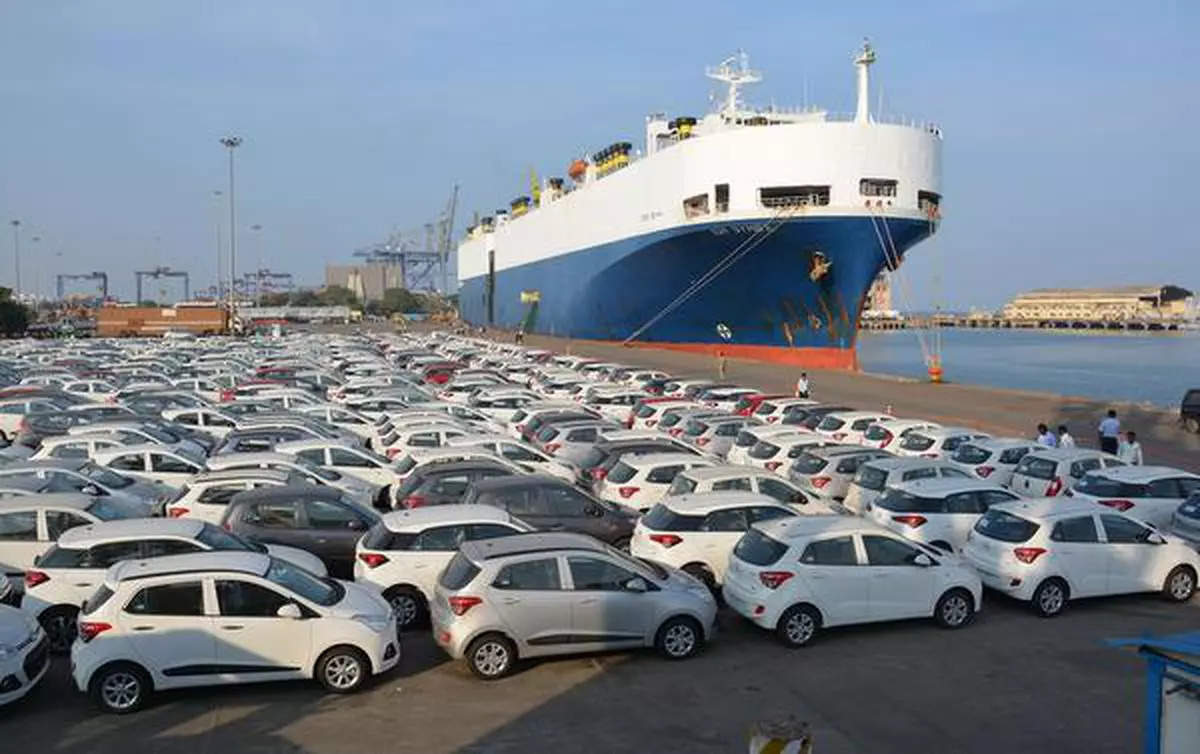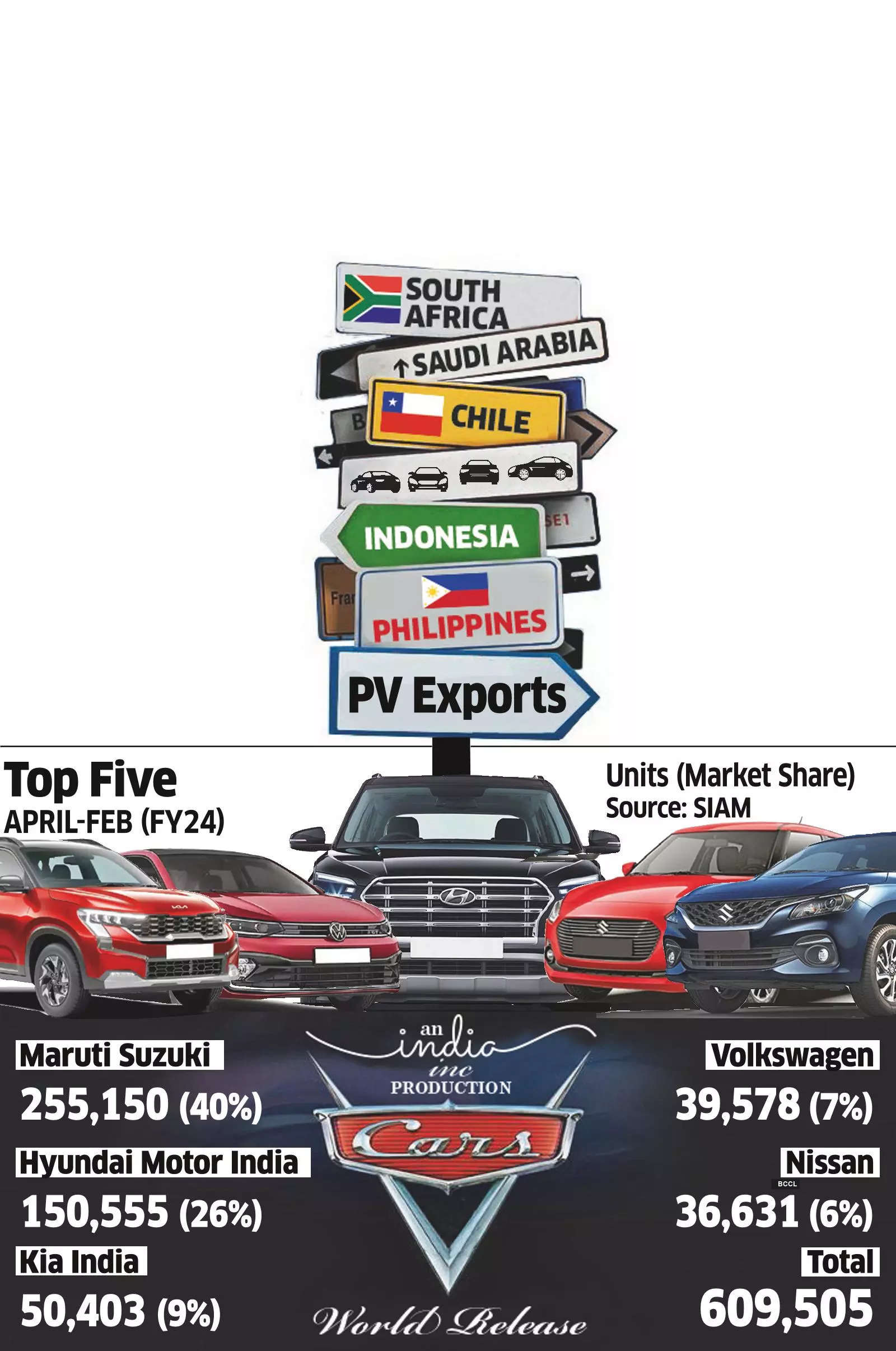
Made-in-India car exports are set to touch pre-Covid levels, despite global uncertainty, amid an increase in demand for models such as the Hyundai Creta, Maruti Suzuki Grand Vitara, Kia Seltos and Mahindra XUV700 from customers in Australia, Latin America and Southeast Asia.
According to industry estimates, Indian carmakers are set to ship more than 675,000 vehicles in the fiscal year that ends March 31, recovering from a low of 404,000 reported in the aftermath of the pandemic in FY21. Around 663,000 cars were exported from the country in the last financial year.
Vehicle exports were dominated by Maruti Suzuki and Hyundai, which together accounted for two-thirds of all cars shipped out of the country.
Homegrown auto makers like Tata Motors and Mahindra & Mahindra had a modest share of 0.4% and 2%, respectively, as per industry data.
Kia, Volkswagen and Nissan feature among the top five carmakers exporting from India with a share of 9%, 7% and 6%, in that order.
While Tata Motors and Mahindra & Mahindra have over the years attempted to step up exports, the lack of a relevant product portfolio high on quality and features has limited sales overseas, experts said.
Improved portfolio
“Indian companies like Tata Motors and Mahindra & Mahindra (M&M) have been trying to scale up exports for many years now,” said VG Ramakrishnan, managing partner at consultancy firm Avanteum Advisors. “However, they did not have the right products for international markets, where customers are very discerning about quality, specifications, brand commitments. Even in a market like Sri Lanka, where a lot of used cars are sold, buyers look for right-hand drive models from Japan which have more features.”
Still, with both companies working on launching a range of world-class products, the portfolio has improved and international sales have gradually started increasing. “Their share (in exports) may be still low. But overseas sales are slowly improving,” he said.
Tata Motors exported 1,998 vehicles and Mahindra 9,218 vehicles in the first 11 months of the fiscal. Maruti Suzuki shipped 202,786 units and Hyundai 129,755 units in the same period.
Mahindra has started working on expanding its overseas footprint with a refreshed portfolio of vehicles such as the XUV700 & Scorpio-N and a soon-to-be-launched range of electric vehicles.
“Our aim is to scale international operations revenue by 2.5x by FY26 and further onward. We are making products that can compete with the best in the world, at prices which are affordable. We believe that our products have reached a stage of maturity where we can go and start competing around the world. We think exports will be a lever for growth,” Rajesh Jejurikar, executive director and CEO, automotive and farm equipment, M&M, had told ET recently.
Tata Motors did not respond to queries on its export plans for passenger vehicles.
Ramping up production
The country’s largest carmaker Maruti Suzuki is working on tripling exports by the turn of the decade, aligned with the Centre’s bid for a bigger play in the global automotive trade. The company is in the process of investing Rs 45,000 crore to double annual production capacity to 4 million units by 2030 – 3 million destined for the domestic market and 750,000-800,000 for exports. South Korean auto major Hyundai also aims to increase shipments once its second factory at Talegaon becomes operational next year.
“Today, made-in-India cars are on a par with the world,” said Maruti Suzuki chairman RC Bhargava. “Our quality is second to none. Toyota and Suzuki are both placing orders (for exports). They have distribution channels globally and are leveraging them, helping us boost international sales.” Suzuki has a global alliance with Toyota for manufacturing, joint development of products, research, among others.
The government has urged the industry to increase exports to a quarter of its total output by 2030, up from 14% in FY23, and even go beyond that.
















